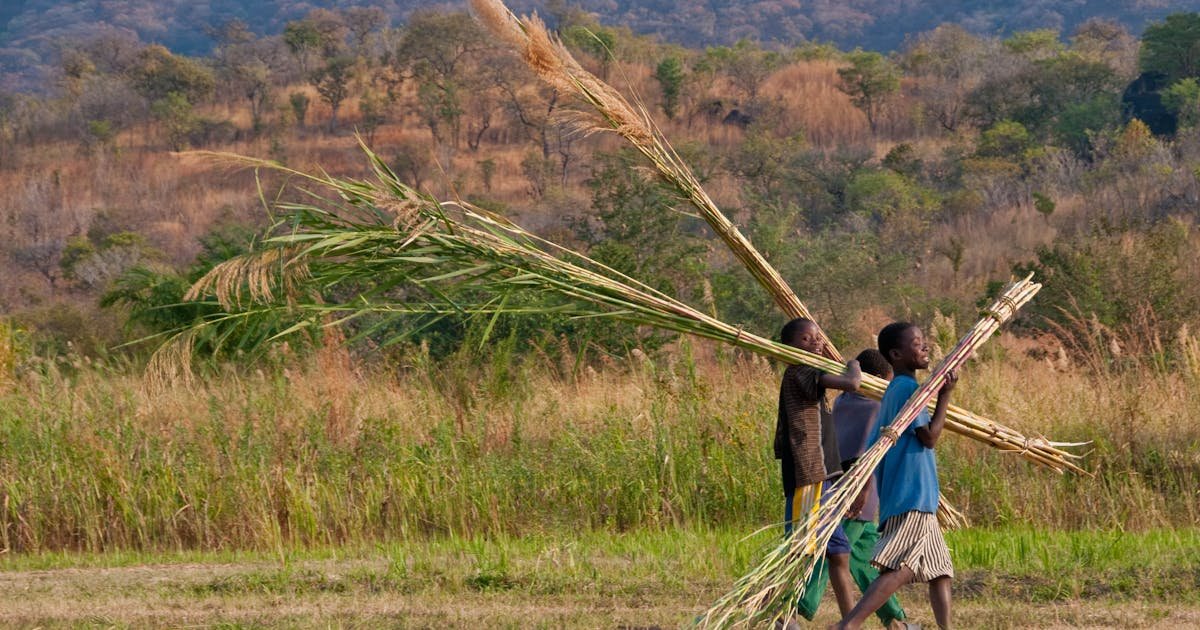Nature is in crisis: Nearly 1 million species face extinction due to human activities and climate change.
To help prevent widespread ecological collapse, many world leaders have rallied around a common goal to protect 30 percent of the planet by 2030 — a target informally known as the “30 by 30″ initiative.
However, the environmental movement has a complicated past when it comes to working with the world’s Indigenous peoples. Though they are custodians of more than a quarter of Earth’s land and seas and protect a significant share of Earth’s biodiversity, Indigenous peoples have frequently been sidelined from environmental efforts — in some cases, even removed from their territories in the name of conservation.
In an interview with Conservation News, Conservation International’s Minnie Degawan, a member of the Kankanaey-Igorot Indigenous group in the Philippines, and policy expert Jill Hepp discussed how the goal to protect nearly a third of Earth’s land and sea could help or hurt Indigenous peoples depending on how it is achieved.
Question: Can you tell me more about the “30 by 30” goal?
Jill Hepp (JH): The “30 by 30” initiative is one of 21 targets being discussed within the Global Biodiversity Framework, a set of global goals aimed at promoting a healthy planet and human well-beingover the next decade. This falls under the Convention on Biological Diversity (CBD) — the international treaty focused on tackling the world’s biodiversity crisis. A coalition led by Costa Rica, France and the United Kingdom, has already pledged to protect nearly a third of the planet by 2030. However, negotiations for the Framework are still underway, and there are a lot of questions around it — including how much area each country is responsible for protecting and where Indigenous territories fit into each country’s target.
Minnie Degawan (MD): “Protecting 30 by 30” is a catchy slogan, but just as important as the goal are the people who will help achieve it. Success will only be possible if there is full and effective participation of Indigenous peoples in the decision-making process. Indigenous peoples have centuries’ worth of traditional knowledge to contribute to the fight to stop climate change and biodiversity loss, yet there are still very few of us in positions of power throughout the environmental movement. Until Indigenous peoples have a seat at the table when it comes to how their lands are used or managed, we will continue to be subjected to racism or left out of crucial conversations that could affect land and marine resources around the world.
Q: When people talk about “protecting” lands and seas, what do they actually mean?
JH: From a policy standpoint, a “protected area” is a legally designated stretch of land or sea that is set aside for conservation, and which allows little to no human activity. However, creating a protected area isn’t the only way to conserve nature — there is a whole suite of other conservation tools that a government can implement to protect biodiversity while still allowing people to benefit from the land, including community conservancies, sustainable land-use zoning and Indigenous-managed conservation areas. Countries can use these techniques, and more, to reach the “30 by 30” target.
MD: The problem is, if not done correctly, the push to protect 30 percent of land and sea could actually hurt Indigenous communities and nature.
When Indigenous people hear the word “protected,” the first thing that comes to mind for many is fences. This can mean actual fences or metaphorical policy “fences” that effectively kick Indigenous peoples off our traditional lands that we have managed for centuries. It’s important to broaden our understanding of what it means to protect the Earth. Vast swaths of land or ocean don’t need to go untouched to be protected. Many Indigenous peoples have deep ties to the natural world; they see nature as a sacred resource that will nourish us if we treat it right.
In many cases, the Western relationship with nature is more transactional, whereas the relationship of Indigenous peoples to their territories is more interdependent. When Indigenous peoples derive something from nature, such as food, water or medicine, we also give something back by sustainably managing the land. In fact, Indigenous-managed lands show less species decline and pollution, and more well-managed natural resources.
Q: How can countries ensure the “30 by 30” goal doesn’t hurt Indigenous communities?
MD: The first step is to officially recognize Indigenous territories by establishing formal, legally binding land rights. This enables Indigenous communities to practice their own systems of resource management, which in turn helps to protect lands and water — and support global conservation goals.
But just giving land titles to Indigenous peoples is not enough. Globally, Indigenous lands are facing increased pressure from development, mining and farming. Countries must ensure that Indigenous peoples have the support they need to steward their lands and seas. This means mobilizing resources such as funding and technical support to Indigenous communities so that they can fend off the pressure to turn forests into farms or mining areas.
JH: Exactly. Depending on how this target is framed, the “30 by 30” initiative could either increase the number of Indigenous peoples kicked off their lands or become a driving force for countries to secure Indigenous land tenure so that they can hit their conservation targets. Currently, Indigenous rights are only mentioned in the last two targets of the Global Biodiversity Framework. Moving forward, it is crucial to incorporate Indigenous knowledge and priorities more holistically in the Framework and policy to ensure that their rights are respected.





